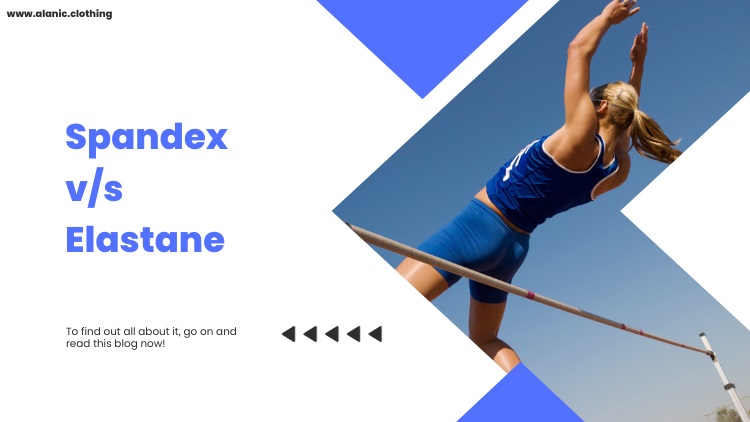
Spandex v/s Elastane: Which of These Two is A Sustainable Fashion Essential?
Every day, individuals all around the world buy clothing pieces that are constructed out of spandex or elastane and enjoy the comfortable fit and flexibility these fabrics offer. However, very few stop to think about the origins of these materials and whether they are really suitable for the environment.
First, you should know that though spandex and elastane are terms that are often used interchangeably, there is a subtle difference between the two. Both fabrics give top-notch elasticity but their production procedures and environmental footprints differ to a certain extent.
To know about them in greater detail and which of these two is a sustainable fashion essential, read on.
What Exactly Are Spandex And Elastane?
Spandex and elastane are both synthetic fibers, well-known for their extraordinary elasticity but the term ‘’spandex’’ is an anagram of the word ‘’expands’’, which talks about its key feature, while ‘’elastane’’ is a term derived from ‘’elastic urethane’’, thus talking about its chemical makeup.
How These Materials Are Made
Both spandex and elastane are constructed through a complex, multi-step chemical procedure that starts with raw materials, especially petroleum-based products. Whether spandex or elastane, both materials are designed by polymerizing a blend of macro glycol and diisocyanate. After the prepolymer procedure, the resulting solution is reacted with a diamine, that extends the polymer chain, thus creating polyurethane. This solution is then pushed via a spinneret to form fibers, which are treated to set their properties.
Based on the manufacturer or the particular end-use of the material, the exact procedure may differ slightly but they all involve precise control and complex chemistry over the reaction conditions to generate the highly stretchable fibers known as spandex or elastane.
Prime Features Of These Materials

Resilience
Both materials are resilient and recover quickly to their original shape after they are stretched, thus making sure the clothing piece maintains its fit over time.
Versatility
Being versatile, spandex and elastane blend well with other fibers.
Great elasticity
Both elastane, as well as spandex, can stretch up to 5 times their actual length without breaking.
Lightweight
Spandex and elastane are lightweight materials
Environmental Effects Of Spandex And Elastane
- The manufacturing procedure includes an array of chemicals, which can be dangerous to the environment if not dealt with properly.
- Clothing pieces made from these materials can shed microfibers during washing which can ultimately end up in the oceans, thus posing a threat to marine life.
- Being synthetic materials, these are not biodegradable.
- As the production procedure of these fabrics is energy-intensive, it further contributes to carbon emissions.
And The Final Words Are…
Though the above-mentioned points lead to significant challenges, advancements in technology are leading to innovations aimed at lessening the environmental footprint of these and other synthetic fabrics.
Still, if you want to go for true planet-friendly alternatives, then you can switch to recycled materials, biodegradable synthetics, and organic and spandex blends. These alternatives offer promising solutions and represent important steps towards a more sustainable fashion industry.
 Catalogue Download
Catalogue Download BECOME A DISTRIBUTOR
BECOME A DISTRIBUTOR
 Mail Us
Mail Us











